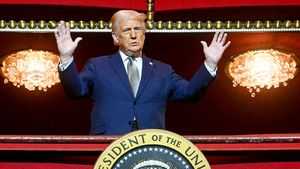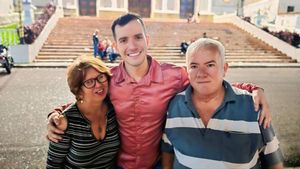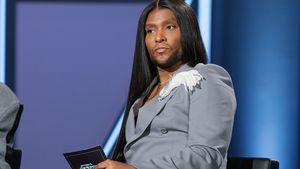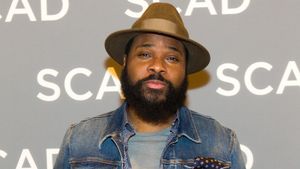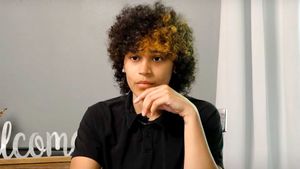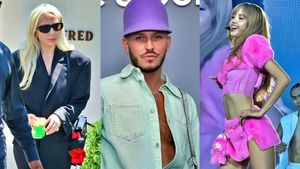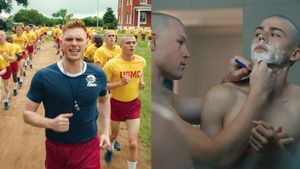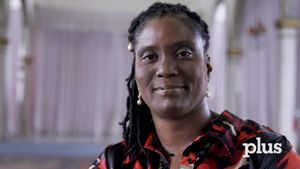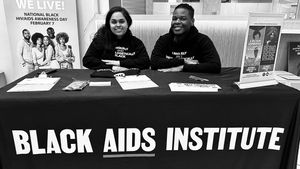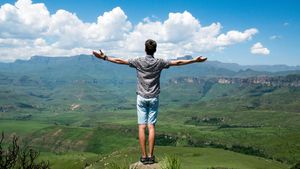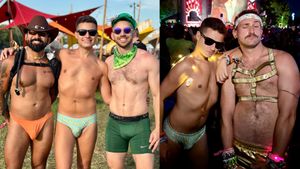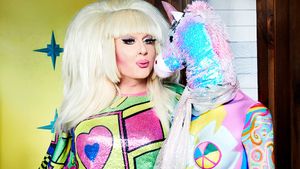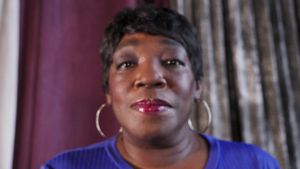I’m a journalist by trade, but a fiction writer by choice. In my spare time, I write stories about trans women in places like New York City and Tennessee, struggling to get by amidst the heartbreak that comes with being trans in the 21st century. Some of my work is light-hearted; others, like my upcoming zine Bell, deal with issues of relationship abuse and sexual assault in queer life.
I write stories for a lot of reasons. Partly because I naturally gravitate towards storytelling. Partly because I want to be true to life. And yet still, partly because I want to share stories for the queer and trans folks in my life that have gone through tough situations and felt like they never had another person to rely on. Writing is a form of healing in that regard.
But there’s a problem. As an English major who learned the craft through Creative Writing courses, I was never taught how to write about the community in my studies. No, I had to learn how to write about LGBT characters on my own.
Today, most literature and English departments feature a range of courses geared towards teaching fiction writing and storytelling as an artform. To their credit, a lot of these courses are smart, professional, and supportive of newcomers. They also tend to focus on various subgenres in fiction. During my freshman year, I took an amazing course on writing young adult literature. Alongside that, my English department also offered a class on creating digital and multimedia projects, like films, blogs, or podcasts. Those spaces were badly needed at the time. They opened up Creative Writing to fields that had been traditionally pushed aside for straying too far from the Western canon.
But to tell the truth, I had a hard time finding myself in these courses. In the four years I spent at Rutgers University, there was only one class where queer or trans stories were being submitted by students to be workshopped. And even then, there were only two students that were generating stories about LGBT characters: a friend of mine, and myself.
I went to a pretty progressive university, too. My alma mater is only 40 minutes from New York City. My school was literally a train ride away. So why couldn’t I find myself there?
There are a couple reasons. For starters, most professors simply aren’t thinking about LGBT students and stories. Unless an instructor specializes in queer or trans fiction, more often than not their knowledge on LGBT writing will be limited. It’s hard to advise students about writing queer characters if your sole exposure to queer stories is an episode of The L Word and an extended trailer of Transparent. Granted, this wasn't always the case in my classes -- one of my professors had a lot of experience with creating LGBT characters, and she gave me beneficial advice that continues to drive my work to this day. But more often than not, a lack of LGBT material in personal libraries plays a major role in what a professor teaches and how they go about their lesson plan.
Depending on the professor, there can also be some tone deafness that comes into the classroom. Aren’t queer and trans experiences largely similar to their straight and cisgender counterparts, one professor might ask? Aren’t lesbians nothing more than just women attracted to women? Aren’t trans women just women who transition? Well, yes, but that’s not the full story. Our lives are messy and complicated. To be women attracted to women, we have to put up with a lot of discrimination and harassment. To transition, many of us sacrifice our relationships with friends and family, just to be true to ourselves. Some of us are forced to work 11, 12, 13 hour days just to afford to get by, doing twice the work that a straight cis man has to do to make the same amount of money. Our lives are often vastly different from one another in ways that are hard to explain to a person unfamiliar with being queer or trans. So when LGBT characters are largely relegated to tokenism, that approach fails to acknowledge the complex experiences, emotions, feelings, and, most important of all, conflicts behind people who identify as trans or gay. It robs students of the bridge they need to turn those complicated feelings into stories.
It’s not just the professors, either. It’s the students too. When a classroom primarily consists of straight or cisgender writers, it’s easy for students to stay inside that comfort zone. Why bother including trans or queer characters into their copy? Why do all the work for a so-called small percentage of the class? When professors are thinking that same way, too, then queer and trans students that do want to write about being queer or trans end up left out of the picture.
So what can we do as writers that identify as LGBT? First off, open the door to that conversation by bringing our own work into the classroom. In my case, I wanted to tell a story about two trans women living together and listening to Springsteen albums to deal with their unresolved issues with their parents. By taking that story draft into a workshop environment, it helped bring new conversations into our classroom about what it means to be a trans person in your 20-somethings. And, on a personal level, it helped me educate cisgender readers on my experiences as a trans woman.
Encouraging, advising, or otherwise supporting other LGBT classmates is also vital. If you see a piece of work that handles queer or trans identities well, say something. Bring it up in class and give that student support on a one-on-one level. When I brought my stories about trans and lesbian women into the classroom, the queer students in the class told me that they loved the idea of exploring and discussing topics that they, personally, could relate to. That not just helped me stay motivated to submit more work about being queer and trans, but it also made me feel like I was speaking to my classmates on a deeply personal level. Not to mention, bringing those stories into the classroom helped me put my experiences upfront. My instructor loved it, and that helped us start a conversation on bringing more LGBT stories into the curriculum.
Writing true-to-life LGBT characters is something that many professional writers struggle with, let alone those of us just starting to show our work to the world. It’s important to create classes that specifically hone in on the queer and trans experience. But until English departments start making that move to foster LGBT stories in the classroom creatively, bringing our work into a workshop setting is the least we can do. Hopefully, it’ll help light a spark in other writers to do the same.




